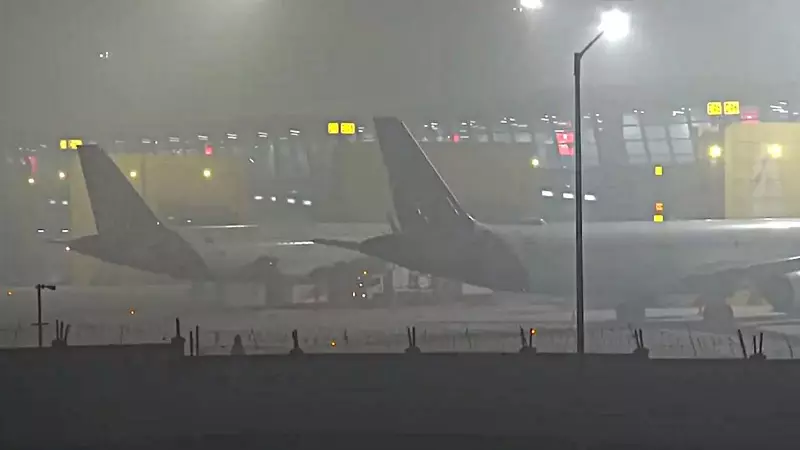
Kolkata's Netaji Subhas Chandra Bose International Airport has achieved a significant technological milestone that promises to revolutionize winter air travel in Eastern India. The airport has successfully completed the installation of advanced Category III-B Instrument Landing System on both ends of its primary runway, equipping the facility to handle severe fog conditions that typically disrupt flight schedules during winter months.
Enhanced Landing Capabilities for Dense Fog
Effective from November 27, 2025, the primary runway will be fully operational with the CAT III-B system, allowing aircraft to land safely even when visibility drops to as low as 50 meters. This upgrade represents a substantial improvement over the previous configuration, where only the 01R approach from the New Town end featured CAT III-B capability, while the Madhyamgram side operated with the less sophisticated CAT II system.
Airport Director Vikram Singh confirmed the completion of this critical infrastructure enhancement. The dual CAT III-B capability means that regardless of which direction aircraft approach from, they can now benefit from the same advanced landing technology, significantly reducing the likelihood of diversions and cancellations during poor visibility conditions.
Operational Efficiency and Fuel Savings
The symmetrical installation brings substantial operational advantages. Air Traffic Control can now strategically switch between the Madhyamgram and Rajarhat/New Town ends based on traffic flow patterns, enabling shorter approaches for arriving flights. This flexibility not only streamlines runway operations but also translates to meaningful fuel savings for airlines and reduced environmental impact.
A senior pilot familiar with the system emphasized that "dual CAT III-B capability will dramatically improve the airport's operational efficiency" during the challenging winter season when visibility issues frequently plague Eastern Indian airports.
Understanding Low Visibility Procedures
During winter months, widespread flight delays and cancellations become commonplace when visibility deteriorates. While modern aircraft are designed to operate in extreme cold at high altitudes, the critical phases of takeoff and landing present the greatest challenges during fog conditions.
Airport officials explain that pilots primarily rely on visual cues for landing. When visibility falls below 550 meters for manual landings, operations must transition to Low Visibility Procedures. For extremely poor visibility around 50 meters, advanced systems like CAT III-B ILS and specially trained pilots become mandatory requirements.
The Instrument Landing System serves as a crucial guidance mechanism that enables aircraft to land safely with enhanced precision compared to visual approaches. The technology is categorized into three main classifications, each with subcategories that allow progressively better performance in worsening visibility conditions.
Historical Context and Passenger Impact
The upgrade comes as a direct response to significant disruptions experienced in previous winters. Records show that on February 2, 2025, arrivals and departures of 13 flights faced delays at Kolkata airport due to fog-induced poor visibility.
More dramatically, flight operations at NSCBI Airport were severely disrupted for three consecutive days from January 23 to 25, 2025, causing widespread inconvenience to passengers. A total of 72 flights were affected on January 23, followed by 34 flights on January 24, and 53 flights on January 25 due to low visibility conditions.
When Low Visibility Procedures are activated typically when visibility falls below 800 meters or when cloud ceiling drops below 200 feet specialized 'follow-me' vehicles guide aircraft to their stands. The lack of visual reference makes taxiing extremely challenging, forcing pilots and Air Traffic Control to rely on maps and radio communication while maintaining maximum separation between aircraft to prevent runway incursions.
This strategic infrastructure investment positions Kolkata airport as a regional leader in handling adverse weather conditions, promising more reliable winter travel for millions of passengers who depend on Eastern India's primary aviation hub.





